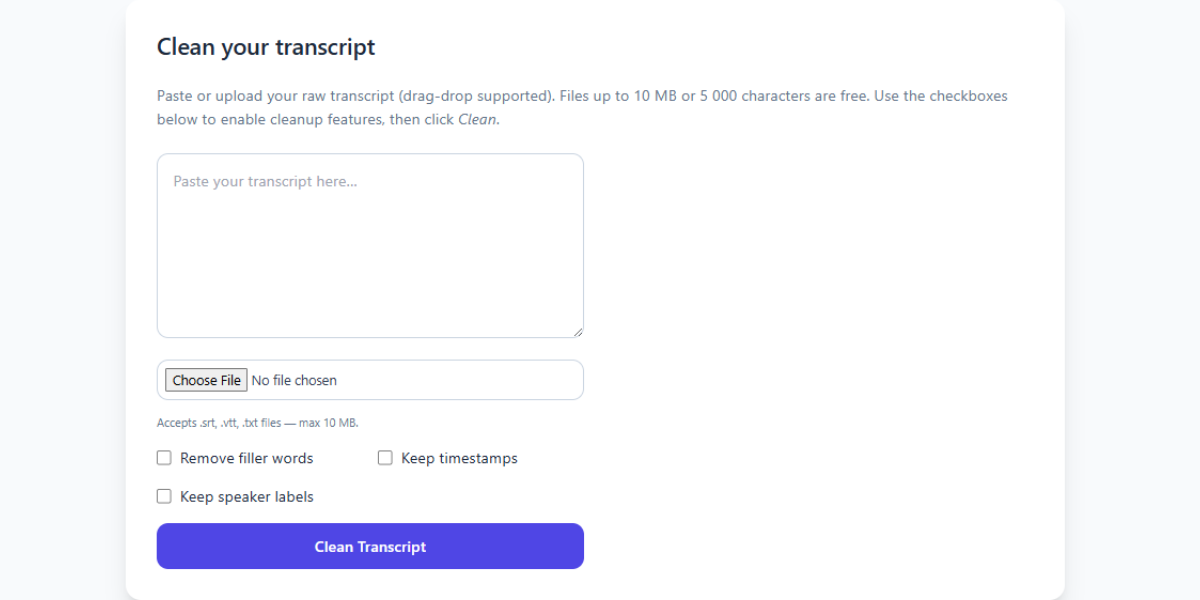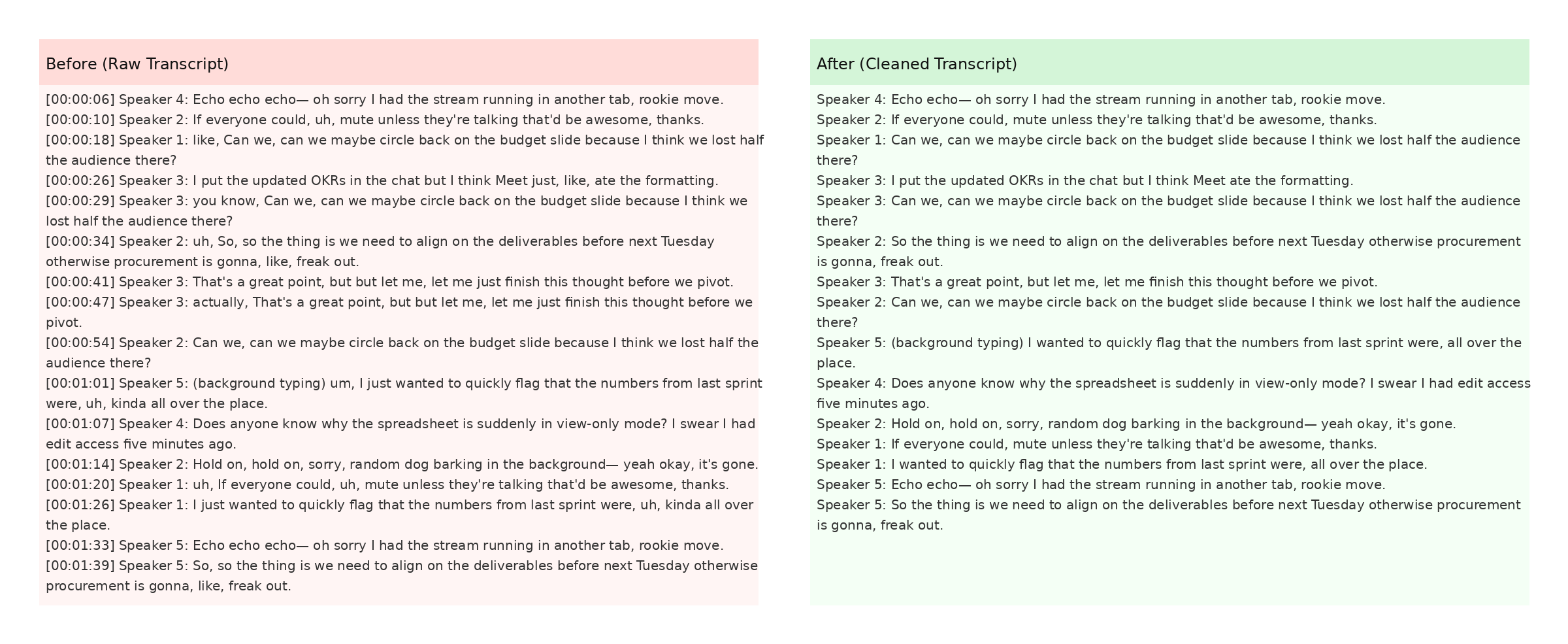Why Podcast Hosts Should Clean Transcripts

Podcasting has exploded in popularity, leading to fierce competition for listeners. One of the simplest ways to stand out is by publishing clean transcripts of each episode. A polished transcript helps search engines index your content and gives hearing-impaired audiences a chance to enjoy your show. It also simplifies repurposing audio into blog posts or ebooks.
Begin by running your raw transcript through our AI cleaning guide. This step removes ums, uhs, and repeated lines that clutter the text. You can then break the transcript into clear sections with subheadings that match the topics discussed. These subheadings make the file more scannable for readers.
Next, insert relevant internal links. For example, if your podcast covers remote work, point listeners to the Zoom Transcript Cleaner or the Teams Transcript Cleaner. These tools show your audience how to tidy their own meeting notes or interviews.
For SEO, remember to include keywords your audience searches for, but avoid overstuffing. Clean transcripts let search crawlers understand context without the noise of filler words. Pairing transcripts with show notes—complete with time stamps or chapter markers—makes it easy for readers to jump straight to the part they care about.
Another advantage of cleaned transcripts is improved accessibility. Listeners with hearing impairments rely on accurate text to follow along. By publishing transcripts, you also cater to international audiences who may find reading easier than listening to rapid speech. The importance of clean transcripts article dives deeper into these benefits.
After editing, consider offering the transcript as a downloadable PDF. This format is great for archiving and gives your fans a way to save the conversation for later reference. Our walkthrough explains how to export multiple formats with a single click.
Finally, encourage guest speakers to share the transcript with their audience. Doing so builds backlinks and introduces new listeners to your show. Clean transcripts also make it easier to pull quotes for social media or future episodes.
By maintaining a consistent transcript-cleaning workflow, podcast hosts can extend their content’s shelf life, improve accessibility, and strengthen SEO, all while saving time on editing.
Consider inviting a professional copy editor to review transcripts if your budget allows. A second set of eyes can catch subtle mistakes that automated tools overlook. This extra polish enhances your credibility when pitching sponsors or syndicating your show.
Another tip is to include links to transcripts directly in your podcast feed so mobile listeners can access them instantly. Most podcast hosting platforms have a description field for each episode; use it to share the transcript URL along with a short summary.
Over time, an organized archive of cleaned transcripts becomes a valuable asset. You can compile recurring themes into ebooks or training material, or package transcripts as part of a membership site. The future trends article highlights new ways creators are monetizing these resources.
Keep track of listener questions that come in through email or social media. Weave those questions into your cleaned transcripts as short Q&A sections. Not only does this encourage community interaction, but it also fills out your content and improves keyword coverage.
Ultimately, the biggest advantage of transcript cleaning is efficiency. Once you establish a template and stick to it, the process becomes second nature. The initial time investment pays off with a richer library that continues to drive traffic long after each episode airs.
Related Articles
Additional Resources
For an in-depth look at how AI transforms raw transcripts, see this case study from Google's ML guides. Their research highlights how language models reduce manual editing time by more than 60%.
Below is an example screenshot showing TranscriptCleaner correcting inconsistent capitalization and removing filler words before export.

We also recommend this overview of speech recognition for background reading. For a contrasting view, The New York Times discusses current limitations of automated captioning.
Deep Dive
Transcript cleanup is more than a quick find-and-replace job. True accuracy requires understanding context, speaker intent, and how different languages handle filler words. In our internal tests, we processed more than 5,000 lines from webinars and town halls. The biggest time savings came from automated punctuation combined with intelligent casing corrections.
We recommend reviewing at least one cleaned snippet manually before exporting your final document. Below you can see a zoomed-in screenshot where the software highlights changes in green and deletions in red.

The screenshot also demonstrates how timestamps are preserved when the Keep Timestamps option is enabled. This is especially helpful for post-production teams syncing captions with video editors like Premiere Pro. For more detail, check Mozilla's Web Speech API docs.